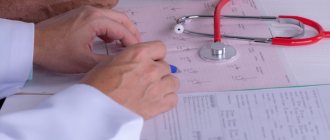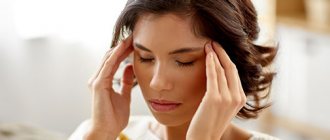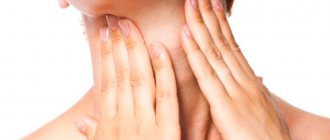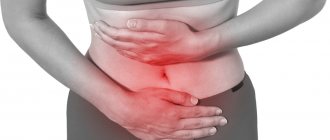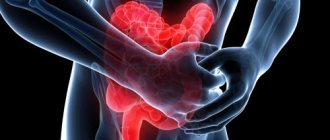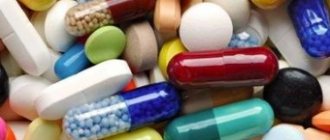Diseases that begin with the letter "P": Felon, Panic attack, Pancreatitis, Papillomas, Paralysis, Bell's palsy, Paranoia, Paraproctitis, Facial nerve paresis, Periodontitis, Periodontal disease, Paroxysm, Paroxysmal tachycardia, Scab (favus), Pediculosis, Testicular torsion cord, bone fracture, rib fracture, femoral neck fracture, post-term pregnancy
Paroxysmal tachycardia is a type of arrhythmia. The patient experiences periodic attacks of heart rate ranging from 140 beats per minute. The pulse can rise to more than 200 beats per minute, which poses a danger to human life. The normal sinus rhythm of the heart muscle increases due to the appearance of ectopic impulses in the ventricles and atria.
The duration of the attack may vary, and the onset and end may be sudden and unpredictable. The disease can manifest itself in both adults and children.
Paroxysmal tachycardia has several varieties. Types of disease are divided into the following categories:
- form of the disease (chronic, acute, recurrent);
- according to the location of the attack (atrial, atrioventricular, ventricular, supraventricular);
- according to the degree of development (ectopic or focal, multifocal, reciprocal).
Reasons for the development of the disease
The key reasons for the development of paroxysmal tachycardia are:
- the presence of congenital pathways for conducting impulses in the myocardium (for example, the Kent bundle or Maheim fibers);
- increased activity of the sympathetic nervous system;
- cases of heart attack, cardiomyopathy or myocarditis;
- inflammatory or dystrophic lesions of the heart muscle;
- formation of pathological movements in the myocardium;
- in the presence of hypertension or congenital heart disease.
Children may be diagnosed with tachycardia of unknown etiology.
Causes of pain in the heart in the cardiac form of VSD
There are several risk factors that can cause cardiac dysfunction in VSD:
- aggravated hereditary predisposition;
- primary deviations in the functioning of the autonomic nervous system;
- emotional and psychological stress.
Chest pain, freezing, heart tremors, neurotic pain in the chest with VSD are caused by the following predisposing factors:
- endocrine diseases;
- neurological disorders;
- fatigue, physical and mental stress.
Doctors at the Yusupov Hospital first establish the cause of the cardiac form of VSD, eliminate it, influence the mechanism of development of symptoms of cardiac dysfunction, and relieve the symptoms of the disease.
Characteristic manifestations of paroxysmal tachycardia
The attack begins and ends unexpectedly and can last from several minutes to 2 days. The first sign of the disease is felt as a sharp “push” in the heart, and then the pulse quickens to 140-200 beats per minute and remains this way for several minutes or even days.
In addition, the disease is manifested by the following symptoms:
- noise in the ears and head;
- nausea or vomiting;
- dizziness and headaches;
- flatulence;
- feeling as if the heart muscle turns to stone and contracts;
- excessive sweating.
Ventricular tachycardia is manifested by an increase in heart rate up to 180 beats per minute, and supraventricular tachycardia - from 180 to 250 beats per minute.
If the attack lasts for a long time, the patient may experience a drop in blood pressure, fainting, and severe weakness. After its completion, a person may experience excessive urine output.
Diagnostics
If paroxysmal tachycardia is suspected, the patient should consult a general practitioner or cardiologist to confirm or refute the diagnosis. The main research method is electrocardiography (ECG). Not all attacks are felt by the patient, so the doctor may prescribe daily
Additionally, the patient may be prescribed the following diagnostic methods:
- magnetic resonance imaging of the heart;
- layer-by-layer scanning of the heart muscle (MSCT);
- Ultrasound diagnostics of the heart.
Treatment
The choice of treatment depends on the form and type of disease. The next attack requires immediate hospitalization. The patient is admitted to the cardiology department if there are noticeable attacks more than 2-3 times a month.
The exception is short-term attacks with a smooth course that do not cause complications. In this case, the doctor may administer an antiarrhythmic drug intravenously (Propranolol, Quinidine, Cordarone). If the attack does not stop, then electrical impulse therapy may be prescribed.
An experienced doctor can stop paroxysm of tachycardia. A mechanical method of influencing the vagus nerve is used. For example, the following methods are used:
- applying gentle pressure on the upper corner of the eyeball from the inside;
- straining;
- inducing the gag reflex by irritating the root of the tongue;
- Pinch your nose and mouth and exhale forcefully in this state.
If an attack of tachycardia occurs several times a month, then the doctor may prescribe the following drugs to reduce the risk of relapse: Celanide, Kinylentin, Verapomil.
In particularly severe cases, doctors resort to surgical intervention:
- installation of a pacemaker;
- destruction of the impulse pathways and the source of tachycardia by mechanical, laser or electrical action;
- using an electric defibrillator.
Relief of heart pain during VSD
Therapy for the cardiac form of VSD consists of a set of therapeutic measures in different directions:
- drug treatment;
- power control;
- moderate physical activity;
- normalization of work and rest schedules;
- psychotherapy sessions;
- physiotherapeutic procedures.
Pain in the heart during VSD, symptoms of cardiac dysfunction disappear after taking twenty drops of Corvalol, Valocordin, and motherwort tincture. If the patient is bothered by a slight aching pain in the heart, accompanied by depression, but not affecting physical activity, menthol or regular valerian can be used as a distraction. If burning, prolonged pain of varying intensity occurs, sometimes too strong to endure and requiring emergency care, non-steroidal anti-inflammatory and sedative drugs are taken.
In case of paroxysmal, prolonged pain that occurs unexpectedly, but quickly spreads throughout the chest and is not relieved by taking nitroglycerin, you should immediately call an ambulance. Pain in the heart area that occurs during periods of exacerbation of VSD, which accompanies any physical activity, intense walking and can continue during a period of rest, requires complex therapy. If short-term paroxysmal pain lasts no more than 20 minutes, appearing against the background of emotions or experiences.
Short-acting beta blockers (anaprilin) help with palpitations. They should not be taken if there is severe bradycardia. In this case, belladonna preparations will help. Rhythm disturbances (extrasystoles) with VSD go away on their own. If heartbeats occur frequently and cause discomfort, contact a cardiologist.
To improve the condition and reduce the severity of the symptoms of the disease, it is necessary to positively influence the autonomic system of the body and influence the signs of illness. To achieve the desired effect, the patient is recommended to change lifestyle, attend psychotherapy sessions, take tonics and follow the recommendations of the attending physician.
Any tension of a neurotic nature can be relieved by massage, taking sedatives and sedatives. If there is a fear of death provoked by VSD, psychotherapists work with the patient. Psychoanalysis and Gestalt therapy have a high effectiveness rate. A revolutionary psychotherapeutic method used for VSD is EDMR therapy. It gives amazing results in combination with Ericksonian hypnosis.
Diet food
When paroxysmal tachycardia is diagnosed, the patient needs to constantly monitor blood sugar and cholesterol levels. Gaining excess weight is not allowed. Overeating can trigger the onset of an attack of tachycardia. Therefore, it is important to eat small portions 4-5 times a day.
The last meal should be no later than 2 hours before going to bed. It is important to exclude “provoking” foods and drinks:
- coffee Tea;
- confectionery sweets and buns;
- foods containing a lot of sugar and starch;
- butter, lard and mayonnaise.
Features of treatment and first aid
Having identified symptoms of tachycardia arising from VSD, the patient should consult a cardiologist. The specialist will prescribe a series of examinations to exclude other diseases. After diagnosis, a treatment regimen is drawn up based on the course of the disease. It mainly includes medications, psychotherapy sessions and traditional medicine.
If the attack has already begun, then you need to remember the following algorithm of actions:
- postpone the work being done;
- try to calm down and not think about the bad;
- find a well-ventilated area;
- lie down with a cold object on your forehead.
To get rid of paroxysm faster, the following methods are suitable:
- take quick deep breaths and exhale 2 times slower;
- hold your breath, keeping your abdominal muscles tense;
- lightly press your finger on the root of the tongue to induce vomiting;
- hold your head under running cold water;
- apply force to the angle of the lower jaw;
- use sedative drops (Valerian, Corvalol);
If there is a lack of air, it is recommended to breathe for 10 minutes into a paper bag. If you cannot fight the attack and it progresses, then you need to call an ambulance.
Drug course of treatment
Drug treatment of tachycardia with VSD consists of taking effective sedative and antiarrhythmic drugs. You can see their features below:
- Tablets based on herbs with a sedative effect (hawthorn, motherwort, valerian, peppermint, lemon balm) are inexpensive and publicly available. The effect they have helps reduce nervous tension and normalize pulse and blood pressure. The advantage of such medications is the small number of contraindications and side effects, due to which they are used for a long time. You can purchase herbal preparations at any pharmacy without a doctor's prescription.
- Medicines with a sedative effect, made from chemical compounds, are more effective (Relanum, Prazepam). Doctors recommend using such remedies when you are often in stressful situations. They have an extensive list of adverse reactions, but have a pronounced calming effect, due to which the heart rate decreases and blood pressure stabilizes. Most types of these pills are prescribed by prescription.
- Drugs with an antiarrhythmic effect are used as a means of eliminating tachycardia. They stabilize the heart rhythm and prevent relapses. The downside of these medications is a large number of contraindications.
Medicines from the above groups are prescribed by the attending physician, focusing on the course of the disease. How to get rid of tachycardia during VSD using antiarrhythmic drugs? The following groups will help:
- Beta blockers reduce the effect of adrenaline on the heart muscle by blocking its receptors. They are cardioselective (Betacard, Betoftan, Corbis) and non-selective (Obzidan, Sotalol, Niolol). Medicines from the first group act on beta-1 adrenergic receptors, which are located in the heart muscle. Their blocking contributes to a drop in blood pressure and a decrease in heart rate. Non-selective drugs affect beta-1 and 2 adrenergic receptors. The impact is similar to the first group. The downside of these tablets is the increased risk of developing bronchospasm. In case of VSD, you can limit yourself to cardioselective blockers, since beta-2 receptors are localized in the bronchi and there is no need to affect them.
- Potassium channel blockers prevent the element from entering the heart cells, as a result of which electrical activity slows down, pressure drops and the severity of tachycardia decreases. The most relevant among them is Amiodarone. The drug has a small number of contraindications; it is successfully used to treat arrhythmia and high blood pressure in combination with heart failure. The downside of the drug is the high risk of developing adverse reactions (weakness, decreased visual acuity, thyroid dysfunction) with long-term use.
Medicines with an antiarrhythmic effect are prescribed not to eliminate the cause of the failure, but to stop tachycardia and prevent the development of complications. The following remedies can help reduce nervous tension and improve heart function:
- Nootropic medications (“Piracetam”, “Pantogam”, “Phenibut”) are used to increase the patient’s resistance to stressful situations, physical and mental overload and other external factors. Taking them will improve cognitive abilities and restore the balance between the sympathetic and parasympathetic departments, which will lead to the elimination of the cause of tachycardia.
- Daytime tranquilizers (Prazepam, Trimetozin, Gidazepam) cope well with attacks of panic and unreasonable fear. After taking them, sleep improves and nervous excitability decreases. Unlike simple tranquilizers, medications from this subgroup have a more pronounced anti-anxiety effect and are less sedative and hypnotic. Patients are able to take the medication during the day and do their daily work without causing discomfort drowsiness. By reducing tension in the nervous system, the influence of the sympathetic department is reduced and tachycardia is eliminated.
Frequent paroxysms of tachycardia gradually exhaust the heart. To prevent the development of complications, doctors advise combining sedatives and antiarrhythmic drugs with vitamin complexes:
- "Ascorutin" is rich in ascorbic acid and rutin. It is recommended to be used to normalize metabolic processes, strengthen the walls of blood vessels and the immune system.
- “Napravit” contains a high concentration of B vitamins, magnesium, potassium and other elements vital for the stable functioning of the heart and nervous system. If you take the pills for a long time, you can stop the development of atherosclerosis and complications caused by tachycardia.
- “Asparkam” is valued for the large amount of potassium and magnesium in its composition. Doctors recommend the drug to eliminate arrhythmia, improve cardiac patency and stabilize electrolyte balance. To increase effectiveness, it can be combined with antiarrhythmic drugs.
Psychotherapy
Tachycardia resulting from vegetative-vascular dystonia is effectively eliminated by treating mental problems. Psychotherapy will help solve the problem. Its essence is to improve the emotional state and increase the patient's resistance to stress to prevent attacks. The sessions are conducted by an experienced psychotherapist.
Stabilization of the condition is observed no earlier than the 5th visit to the doctor. In total, it is advisable to undergo at least 10 sessions so that the specialist can reduce the impact of factors affecting the patient’s psyche. In advanced cases, to improve the therapeutic effect, psychotherapy is combined with medications that have a sedative, antiarrhythmic and anti-anxiety effect.
Physiotherapy
Nervous tension, which is often the cause of the development of VSD, can be eliminated using physiotherapy methods:
- acupuncture;
- electropheresis;
- breathing exercises;
- back massage;
- healing baths;
- magnetic laser therapy.
ethnoscience
Increased heart rate caused by vegetative-vascular dystonia can be stopped using traditional medicine methods. They virtually do not cause adverse reactions and have a minimal number of contraindications, therefore they are in demand in the treatment of many pathologies. The list of the most effective recipes is below:
- Hibiscus tea is an aromatic drink made from the Sudanese rose. It has a pronounced sedative effect, due to which the heart rate decreases. Prepare a decoction by pouring 2 buds with 1 cup of boiling water. You can drink 1-2 cups of it every day.
- Collections of medicinal herbs are sold in virtually any pharmacy. They have a sedative, hypotensive and vasodilating effect. You can make the medicine yourself by collecting all the ingredients in the required quantity. To prepare the decoction, you will need to pour 50 g of the collection with 450 ml of boiling water. Take it 50 ml 5 times a day for no more than 1 month.
- The needles are rich in phytoncides, which help reduce blood pressure and eliminate arrhythmia by reducing the heart rate. After completing the course of therapy, patients experience loss of insomnia and increased resistance to stress. You can add pine needles in the form of oils (juniper, pine) to the bath.
- Juniper stabilizes heart function and relieves nervous tension. It is enough to eat 1 berry per day, increasing the dosage by 1 piece. every day. After 2 weeks, take in reverse order. Continue treatment for 28 days.
- Hawthorn decoction can reduce the intensity of manifestations of VSD, reducing blood pressure and heart rate. To prepare, simply mix 30 g of the plant’s fruits with 1 cup of boiling water. Then leave the medicine to infuse. After 20 minutes you can drink it in the morning and evening, ½ cup.
- Honey is a valuable source of B vitamins and other beneficial substances. It can be added to a glass of milk in an amount of 25-30 ml to obtain a good medicine with a sedative effect. It is best to drink it before bed.
Prevention
Compliance with the rules of prevention will prevent the development of further attacks of tachycardia and improve the general condition. Their list is below:
- devote at least 7-8 hours of sleep a day;
- periodically take 5-minute breaks at work;
- adjust the daily menu;
- try to avoid conflicts;
- apply self-hypnosis techniques;
- exercise.
Tachycardia, manifested against the background of VSD, occurs quite often, especially in the presence of disruptions in the nervous and endocrine systems. Its sinus variety does not require special treatment, but more serious forms must be identified immediately so that they do not lead to the development of severe complications. Arrhythmia can be reduced with medications, folk remedies and psychotherapy sessions. The doctor should select a course of treatment, focusing on the main cause of the failure in the autonomic nervous system.
Paroxysmal tachycardia: danger and risk groups
Paroxysmal tachycardia has a negative impact on human health. This is expressed as follows:
- “wear and tear” of the heart muscle;
- cardiogenic shock;
- the efficiency of the circulatory system decreases;
- development of heart failure;
- pulmonary edema.
A recurrent form of the disease can trigger the occurrence of arrhythmogenic cardiomyopathy. In especially severe cases, the disease can cause clinical death and death.
Most often, paroxysmal tachycardia affects older people with a history of heart attack, myocardial disease, coronary heart disease and those with hypertension or heart disease.

